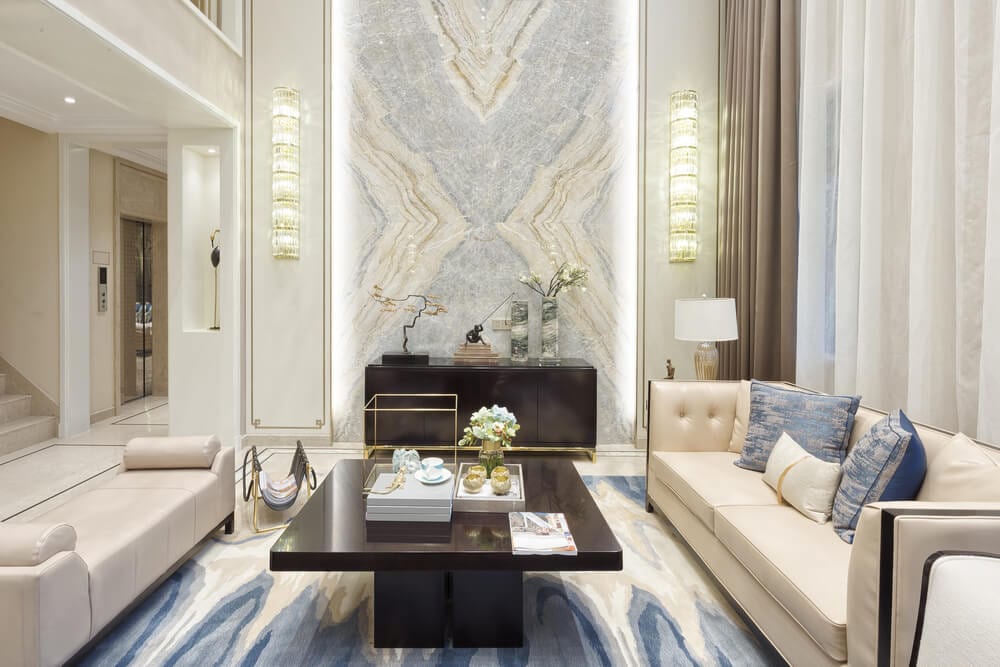The art of interior design involves creatively turning functional spaces into aesthetically pleasing masterpieces. Interior designers must understand design, beautification, and a variety of art skills to succeed in their professions. If you’re interested in becoming one, keep reading.
What is an Interior Designer?
Interior designers create spaces that are functional, safe, and attractive while meeting the specific needs of each client. Through the use of decorations, color palettes, functional decor, and furniture placement, interior designers pull rooms together under a variety of themes.
An interior designer isn’t limited to designing private homes; they can also specialize in corporate, healthcare, kitchen and bath, sustainable, and universal design. Designers either work as independent contractors or in a firm. They need to have flexible work hours.
The average salary for an interior designer is $54,705 per year. However, it’s possible to make $71,000-$250,000 or more per year, especially if you work with celebrities or luxury properties.
How Do I Become an Interior Designer?
You can take two paths to become a professional interior designer: the college or freelance route. While going to college takes more time, becoming a freelancer is more difficult.
Get a Bachelor’s Degree
The first step to becoming an interior designer is getting a bachelor’s degree from a certified school. While there are schools that offer interior design degrees, a degree in architecture, arts, or fine arts can provide variety. A master’s degree can offer you more work opportunities.

Do You Need a Degree to Become an Interior Designer?
No, you don’t need to go to university to become an interior designer. Did you know that you’re also able to become an interior designer with no experience? If you build a portfolio and start making blog content for your website, you could gain enough traction to find design jobs.
Pass the National Council for Interior Design Qualification (NCIDQ) Exam
The NCIDQ exam tests your interior design knowledge. You need a minimum of 90 credit hours and 1,760 hours of work experience to take the exam. When you pass, you’ll be able to work in Canada, but it isn’t required in the US. However, getting this certification can help you find work.
Get Some Work Experience
Interior designers are in a very competitive industry, so gaining work experience can be difficult. However, you can intern at interior design firms or with senior designers to improve your skills and employability. You could also try volunteering, community projects, or pro-bono work.
Build Your Portfolio
Every creative professional needs to build an impressive portfolio, including designers. As you gain more experience, make sure you include samples of your best work online. By adding links to your portfolio on your resume, you convince hiring managers you can walk the walk.
What Does an Interior Designer Do?
An interior designer’s responsibilities depend on the industry they work in. However, the majority of designers will have to use specific skills to work with clients and create incredible spaces.
- Speak to Clients: Interior designers must communicate with clients before and during the project to understand their budget, expectations, and project delivery time.
- Draft Designs: Designers can pull from their knowledge to visualize and sketch design plans by hand or with software. They choose the best design elements for a space.
- Create Documents: Interior designers have to create documents, like invoices, for clients. They also have to understand quality assurance and building regulations.
- Scheduling: Designers often deal with more than one client at a time, so they have to outline schedules and timelines for their clients to meet structured deadlines.
- Collaboration: Interior designers require help from third parties, like engineers, plumbers, painters, and contractors, to meet quality and regulatory requirements.
- Research Trends: Designers have to stay on top of trends to stay employed. They have to identify and adopt developments and styles that their clients will want to use.
- Offer Feedback: Interior designers can’t be yes men. They may have to offer constructive criticism and update their clients on their progress regularly.
Interior designers will also advertise or bid on new projects, place orders for materials and furnishing, and estimate project costs for their clients. Most Interior designers are all-in-one marketing powerhouses because they have to know how to properly sell their services.
In specialty jobs like healthcare, an interior designer will focus more on utility over aesthetics because hospitals have strict design requirements. In patient rooms, they may use color psychology to help others recover faster or feel calmer or happier during their visit.
Sustainable designers need a Leadership in Energy and Environmental Design certification from the Green Building Council to design sustainable buildings or environmentally friendly homes.





